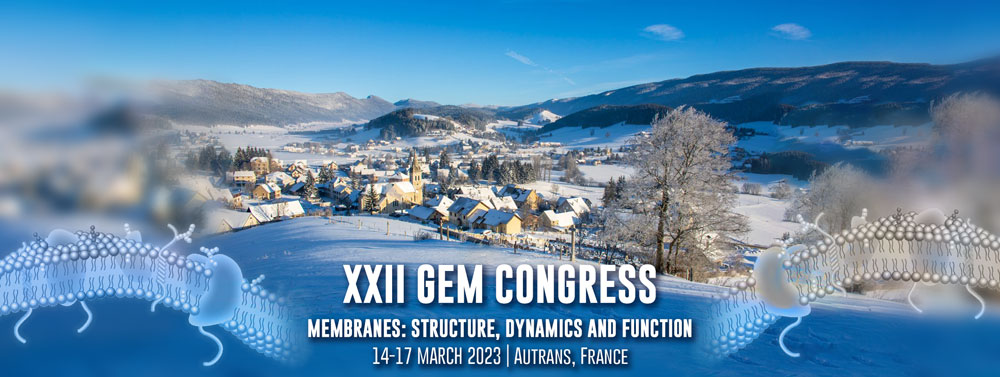The outer membrane is a crucial barrier that protects Gram-negative bacteria against harsh environments and restricts cellular entry for antibiotics. It consists of lipopolysaccharides (LPS) and phospholipids and is densely packed with outer membrane proteins. Yet it remains largely unknown how these are organised in the outer membrane, with various indications of non-homogeneous distributions...
The Growth Hormone Secretagogue Receptor (GHSR), a 366 amino acids Rhodopsin-like G proteins-coupled receptor (GPCRs), is involved in signal transduction into the cells and plays an important role in food intake, glucose metabolism and immune response. Its high constitutive activity of 50%, seldom among GPCRs, makes this receptor a particularly attractive pharmacological target. In the last...
Solid-state NMR investigation of the synergistic action of magainin antimicrobial peptides
Ahmad Saad, Jesus Raya, Elise Glattard, Burkhard Bechinger
Membrane Biophysics and NMR, Institut of Chemistry (UMR-7177), 1, rue Blaise Pascal Universite de Strasbourg/CNRS, 67000 Strasbourg, FRANCE
Abstract:
Magainin and PGLa are cationic, amphipathic antimicrobial peptides isolated from the skin of...
A. Poulhazan 1, A. A. Arnold 1, F. Mentink-Vigier 2, T. Wang 3, I. Marcotte 1, D. E. Warschawski 4
1 Department of Chemistry, University of Quebec at Montreal, Montreal, QC, Canada
2 National High Magnetic Field Laboratory, Tallahassee, FL, USA
3 Department of Chemistry, Michigan State University, East Lansing, MI, USA
4 Laboratoire des Biomolécules, CNRS UMR 7203,...
The introduction of DNA origami, which uses many staple strands to fold one long scaffold strand into a rationally designed nanostructure has dramatically improved the complexity and scalability of DNA nanostructures with unprecedented capabilities. Our goal is to explore the bottom-up structural DNA origami nanotechnology to build artificial molecular systems and machines sufficiently...
Membrane proteins reside at interfaces between aqueous and lipid media and solving their molecular structure relies most of the time on removing them from the membrane using detergent. Luckily, this solubilization process does not strip them from all the associated lipids and single-particle cryo-transmission electron microscopy (SP-TEM) has proved a very good tool to visualize both protein...

